The 2024 Tacoma: What you need to know
Nearly a decade after Toyota’s last new Tacoma, which was mechanically quite similar to its 2004 predecessor, we finally have an all-new truck. There’s nothing to wait on now except pricing.
If you only remember a few details about the 2024 Tacoma, make it these eight.
Make like a Prius and go hybrid
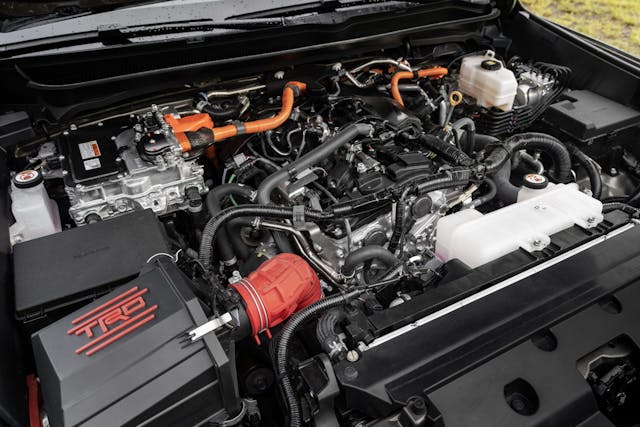
Like the new Tundra and the new Sequoia, the Tacoma is now available as a hybrid—a first for this pickup. It rides on the same TNGA-F architecture as those larger trucks, both of which are also all-new as of the last year. Toyota’s been busy.
The hybrid Tacoma’s system will pair a 2.4-liter turbocharged four-cylinder engine with a 48-hp electric motor integrated into the eight-speed automatic transmission. That electric motor will draw power from a tiny, 1.87-kWh nickel-metal-hydride battery. Total system output rings in at 326 hp and a whopping 465 lb-ft of torque. That’s nearly double the torque output of the current V-6, which the new truck will not offer.
The hybrid drivetrain is optional on the TRD Off-Road, TRD Sport, and Limited trims, but it comes standard on the range-topping TRD Pro and Trailhunter trims.
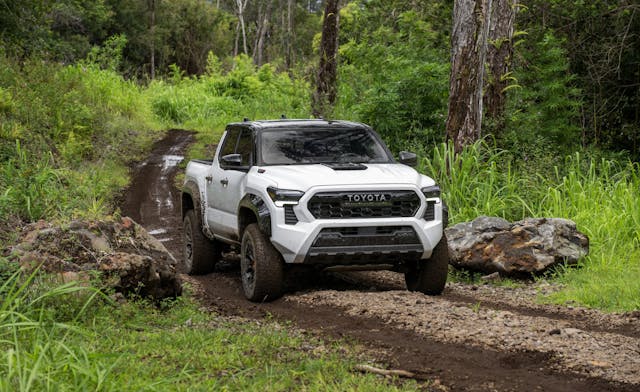
The other engine offered is that same 2.4-liter turbocharged four-cylinder sans the battery pack. On the SR, the lowest trim Tacoma, output will be 228 hp and 243 lb-ft of torque. Opt for anything above the SR—SR5, TRD Prerunner, TRD Off-Road, TRD Sport—and output jumps to 278 hp and 317 lb-ft of torque.
Speaking of Trailhunter …
The 2024 Tacoma brings a new trim level: Trailhunter, which Toyota would like you to think of as the perfect overlanding rig. The automaker partnered with legendary Australian outfitter ARB to develop a special lift kit specifically for this truck. Its showpiece is on the rear axle—a set of 2.5-inch forged monotube shocks with external reservoirs.
ARB also helped create a special steel rear bumper with stronger recovery points and a new rack to mount to the truck bed that can support various overlanding essentials like a rooftop tent.
The Tacoma Trailhunter gets 33-inch Goodyear tires that, along with that lift kit, give the truck an extra 2 inches of clearance up front and 1.5 inches in back. An electronic swaybar disconnect, a first for the Tacoma, is also offered on the Trailhunter. (Toyota didn’t specify where else it would be offered, but we could see the TRD Pro and the TRD Off-Road both featuring this tech as well.) The Trailhunter also gets a special snorkel air intake that snakes up the passenger-side A-pillar, similar in concept to the one that adorns the Ford Bronco Everglades.
A suit of underbody armor and a tucked exhaust tip help ensure the underside of the vehicle stays safe when the going gets a bit rocky. There’s even an integrated air compressor to air down your tires at the trailhead and pump them back up for the highway drive home.
I thought the TRD Pro was the ultimate off-roader?
It was. Is. Well, sort of. Toyota has shifted the TRD Pro’s focus a bit, tailoring the upgrades less for rock-crawling than for high-speed hijinks in the desert. Get pumped: The Tacoma is coming for Ford’s Ranger Raptor and Chevrolet’s Colorado ZR2.
The 2024 Tacoma TRD Pro gets special upper control arms and Fox internal-bypass 2.5-inch shocks. Those can be adjusted by hand to three different stiffnesses, depending on what sort of terrain you’re thundering over. There are also new Fox internal floating piston bump-stops as part of a re-designed, multi-link rear suspension setup. Not sure what that means? The ride over high-speed bumps just got smoother.
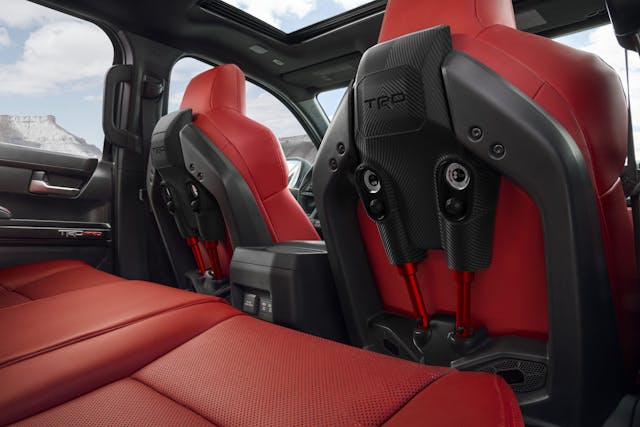
Are those … shock absorbers in the seats?
Indeed they are. You’re looking at Toyota’s IsoDynamic Performance Seat, the only one of its kind in the midsize truck class. Two air-over-oil shock absorbers manage vertical and lateral seat movement at the same time to dampen the wild body motions you’ll experience when hammering over sandy whoops, rocks, goats, and whatever else the desert throws your way that day.
The goal of this patent-pending system is to reduce the strain on your head, neck, and spine by minimizing the movements for which your muscles and joints are trying to compensate. Drivers can adjust the dampening effects, based on body mass and preference, using levers on the seat backs.
Can we take a moment to appreciate how badass these look?
Yeah yeah. But wait … don’t these trucks use leaf springs?
Yes! Well, no! Not always! How’s that for confusing? Here’s the long and short of it: If your new Tacoma is an SR, an SR5 with the XtraCab, or the newly revived TRD PreRunner, you still have a leaf pack in the rear. Anything else—TRD Pro, Trailhunter, TRD Off-Road, TRD Sport, Limited, and the SR5 DoubleCab—will feature the multi-link rear suspension that utilizes a coil spring instead.
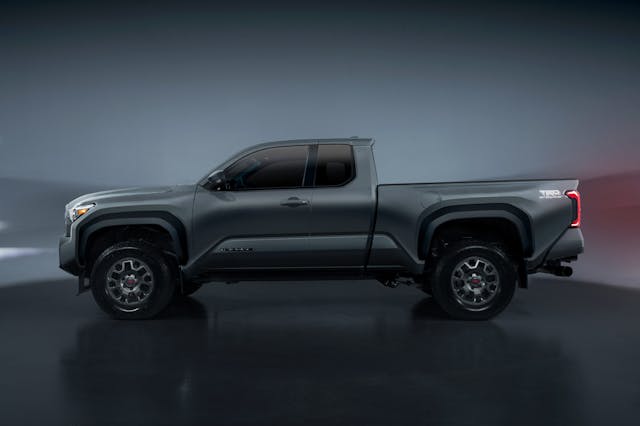
One side effect of that switch: The Tacoma’s max towing capacity didn’t increase at all. In fact, it actually drops to 6500 pounds, down 300 from a properly-equipped third-gen truck. Ford’s new Ranger, by contrast, can drag up to 7500 pounds.
The new Ranger doesn’t have a manual, though!
Three. Pedals. The 2024 Toyota Tacoma will, in defiance of current trends, offer a manual transmission. Rowing your own gears will be a choice on any of the non-hybrid Tacomas, although output for the 2.4-liter turbo four will be reduced slightly to 270 hp and 310 lb-ft of torque, drops of 8 hp and 7 lb-ft over the automatic-equipped models.
That arrangement means that, unlike the previous Tacoma, the TRD Pro does not come with a manual. The Trailhunter won’t get the six-speed, either. Ah well. Rejoice in its existence nonetheless.
On the topic of old tech: The new Tacoma ditches drum brakes in the rear in favor of disc brakes. They’re now present at all four corners.
There sure are a lot of choices to make.
For 2024, the choices get better. Or, at least, more complex. Unlike the new Chevy Colorado and the Ford Ranger, which offer a single bed size, the Tacoma will offer two bed lengths—a 5-foot option and a 6-foot option.
You can have either bed with your choice of cabs: either the standard four-door crew-cab (Toyota calls it the DoubleCab) or a new two-door, single-row one. The latter boasts an added chunk of smart storage space behind the front seats, earning the name of XtraCab. The U.S. will be the only market to get the 2-door, 6-foot Tacoma.
While other manufacturers chop choices and minimize manufacturing complexity, Toyota is taking the opposite approach. As of 2024, Toyota and Nissan build the only two midsize pickups to offer multiple cab configurations.
Anything the new Tacoma’s missing?
One piece of tech is conspicuously absent: A locking front differential. Both Chevy and Ford offer a front locker on the most extreme versions of their midsize trucks, the ZR2 and the Ranger Raptor.
Given that so many of the trim levels feature an electronically locking rear diff, one would think the tech could be adapted for the nose of the truck without too much difficulty. Sure, the outgoing, third-generation Tacoma also lacked a front locker, and that component can be hard to adapt to a vehicle with independent front suspension (Jeep’s Gladiator Rubicon does get an e-locker in the front, but that thing also runs solid axles front and rear). If Chevy and Ford have figured that out, seems like Toyota should too.
The new Tacoma’s biggest competitor, however, might be itself. The outgoing Tacoma just flat-out worked, always and forever. Will the 2024 truck, with all its added mechanical complexity, be as bulletproof? We’re skeptical. It’s possible. But those associations only come from one thing: millions of miles driven by real customers.
On paper, the new Tacoma has the chops, the choice, and the charisma of a truck ready to fend off a new wave of competitors. We can’t wait to get behind the wheel.
***
Check out the Hagerty Media homepage so you don’t miss a single story, or better yet, bookmark it. To get our best stories delivered right to your inbox, subscribe to our newsletters.
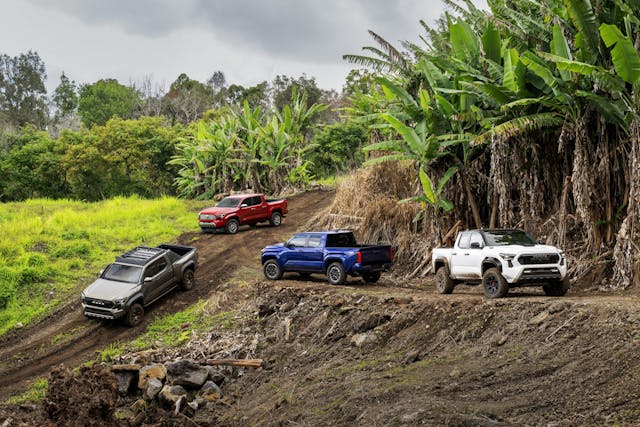

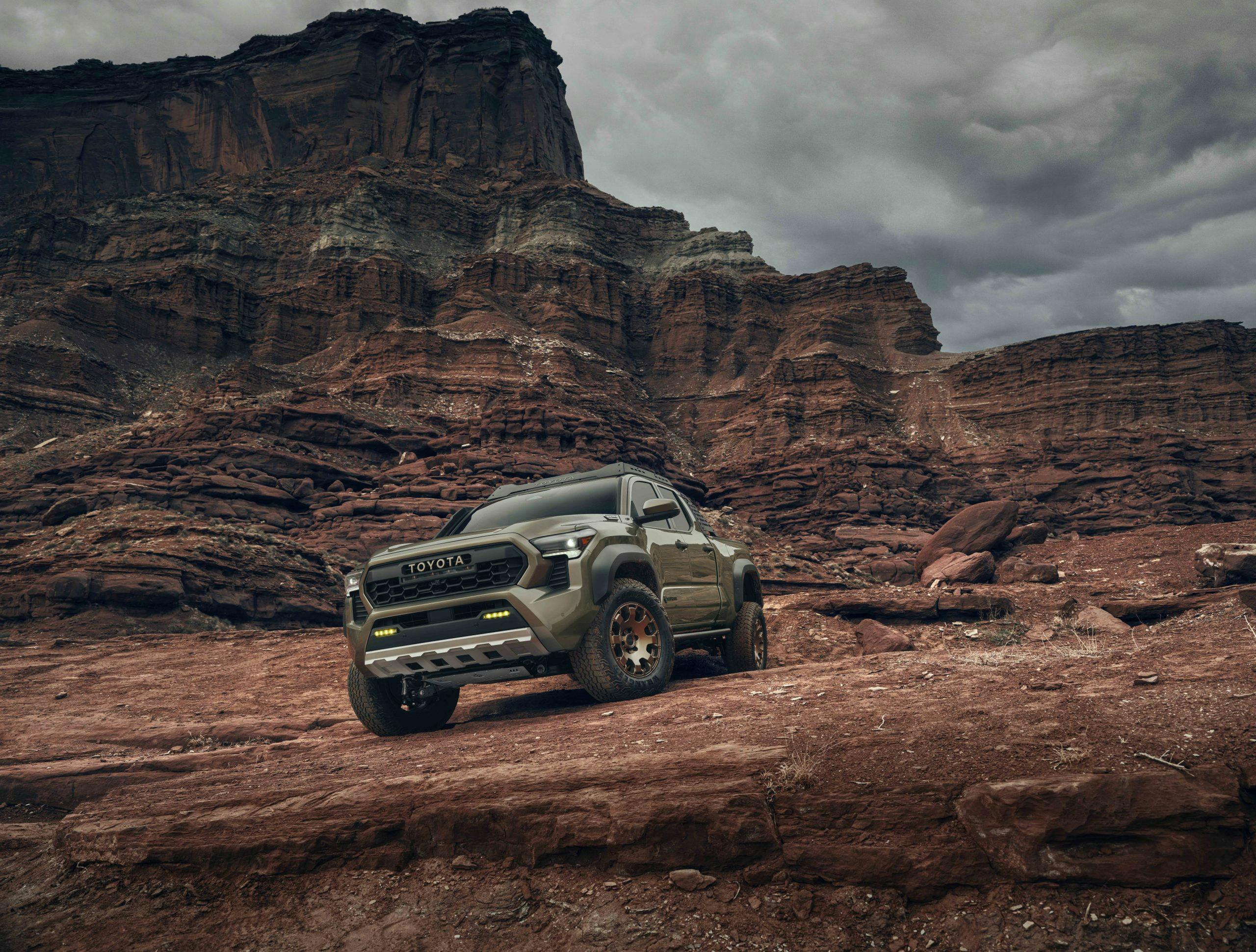
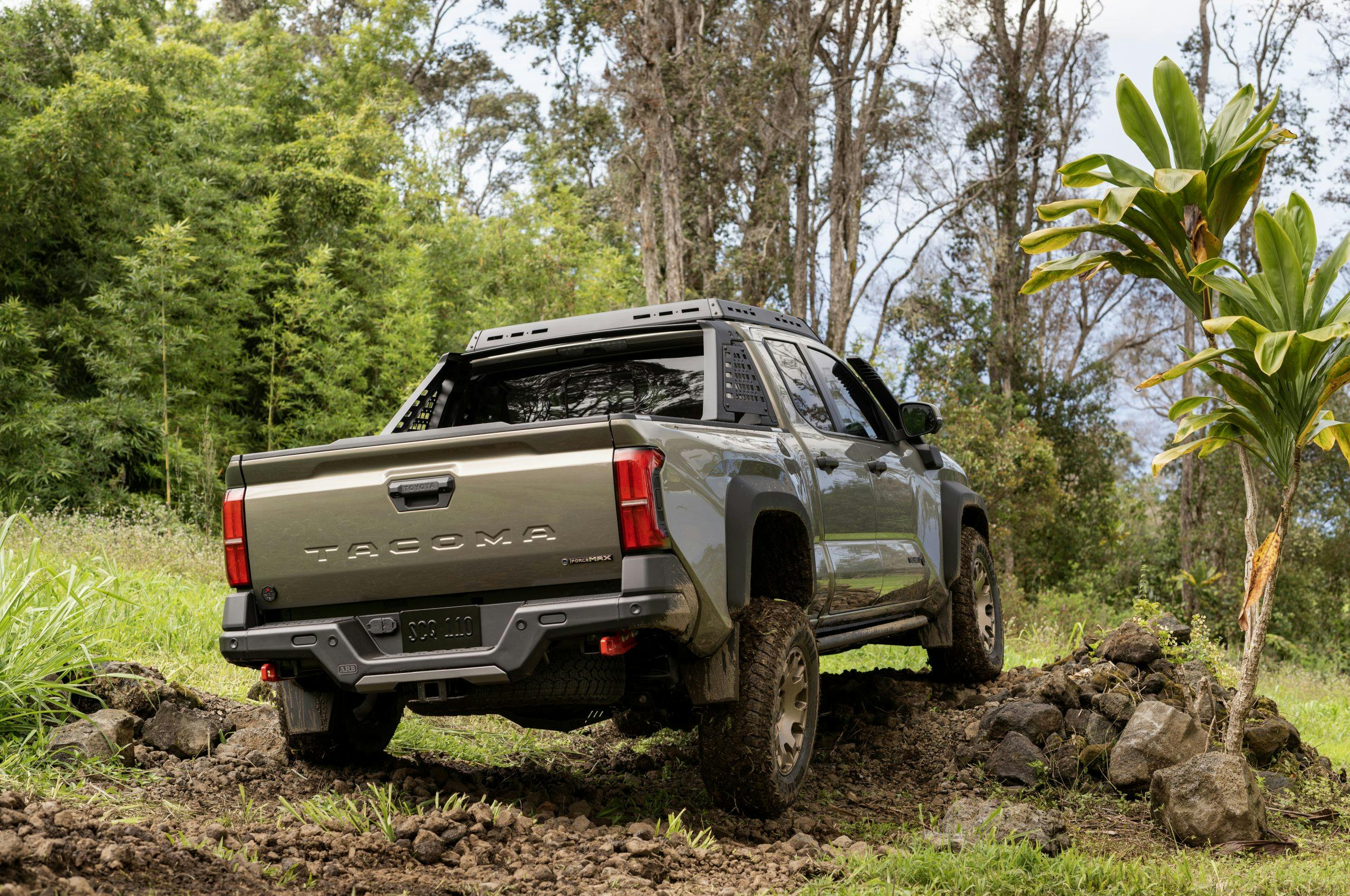
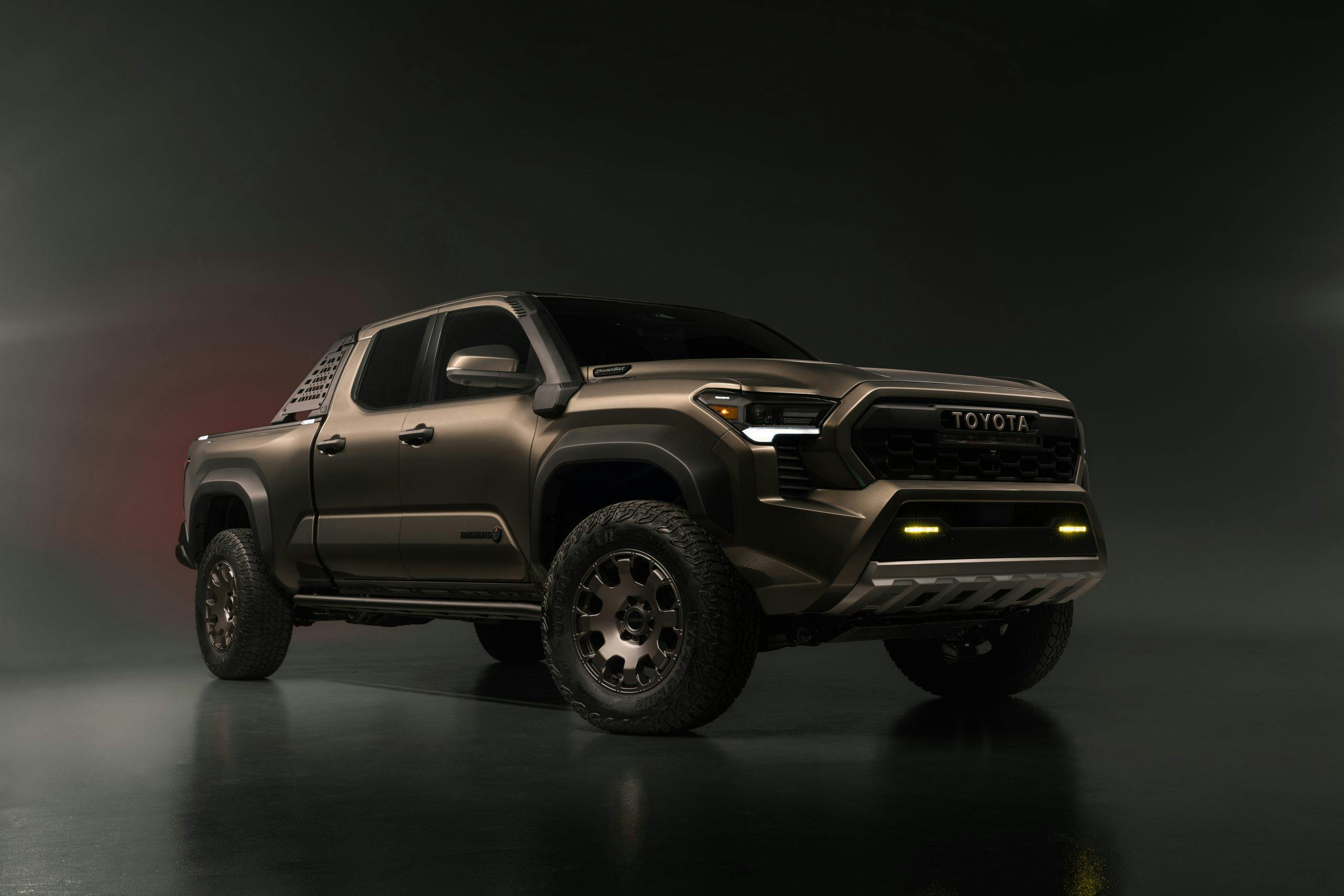
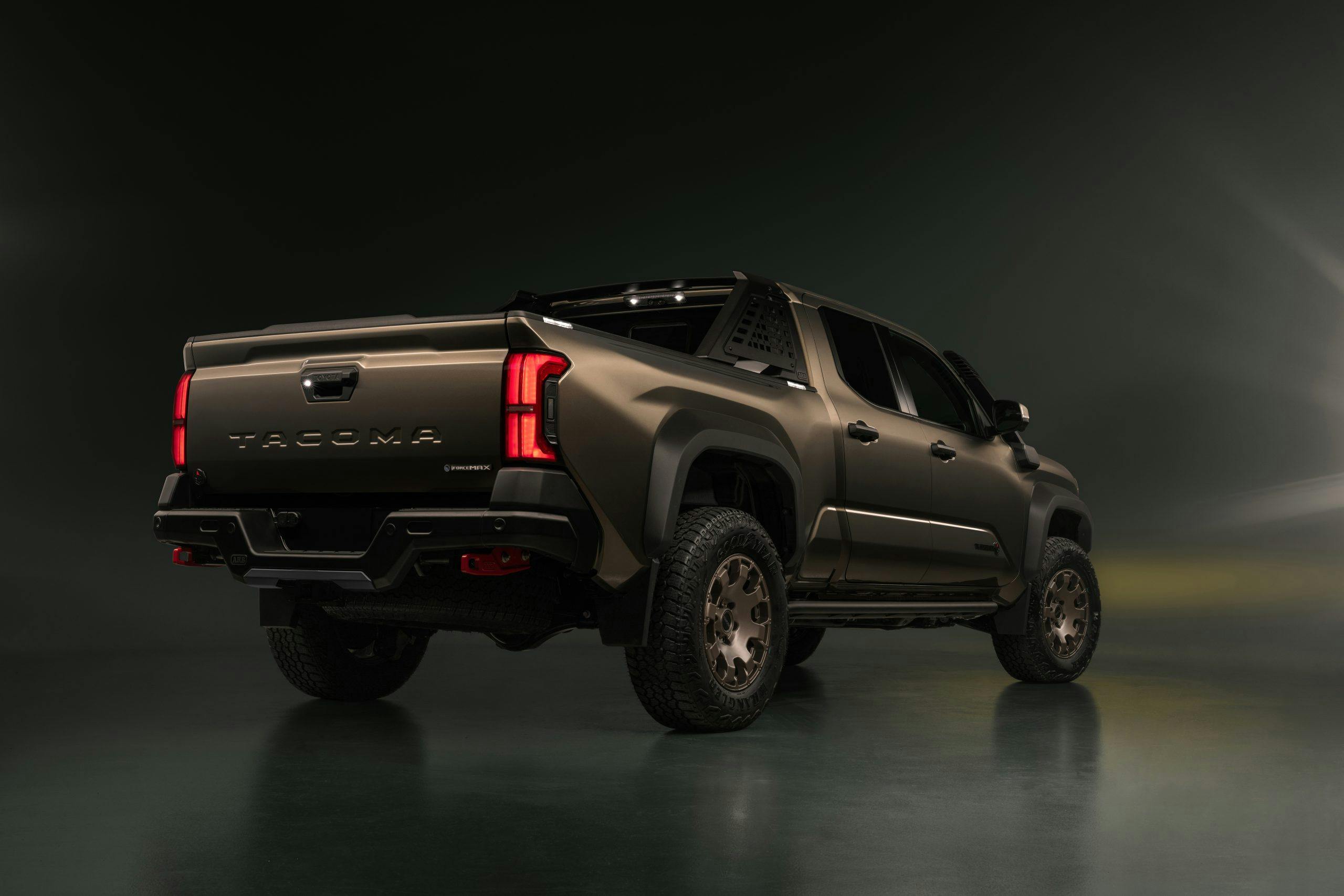
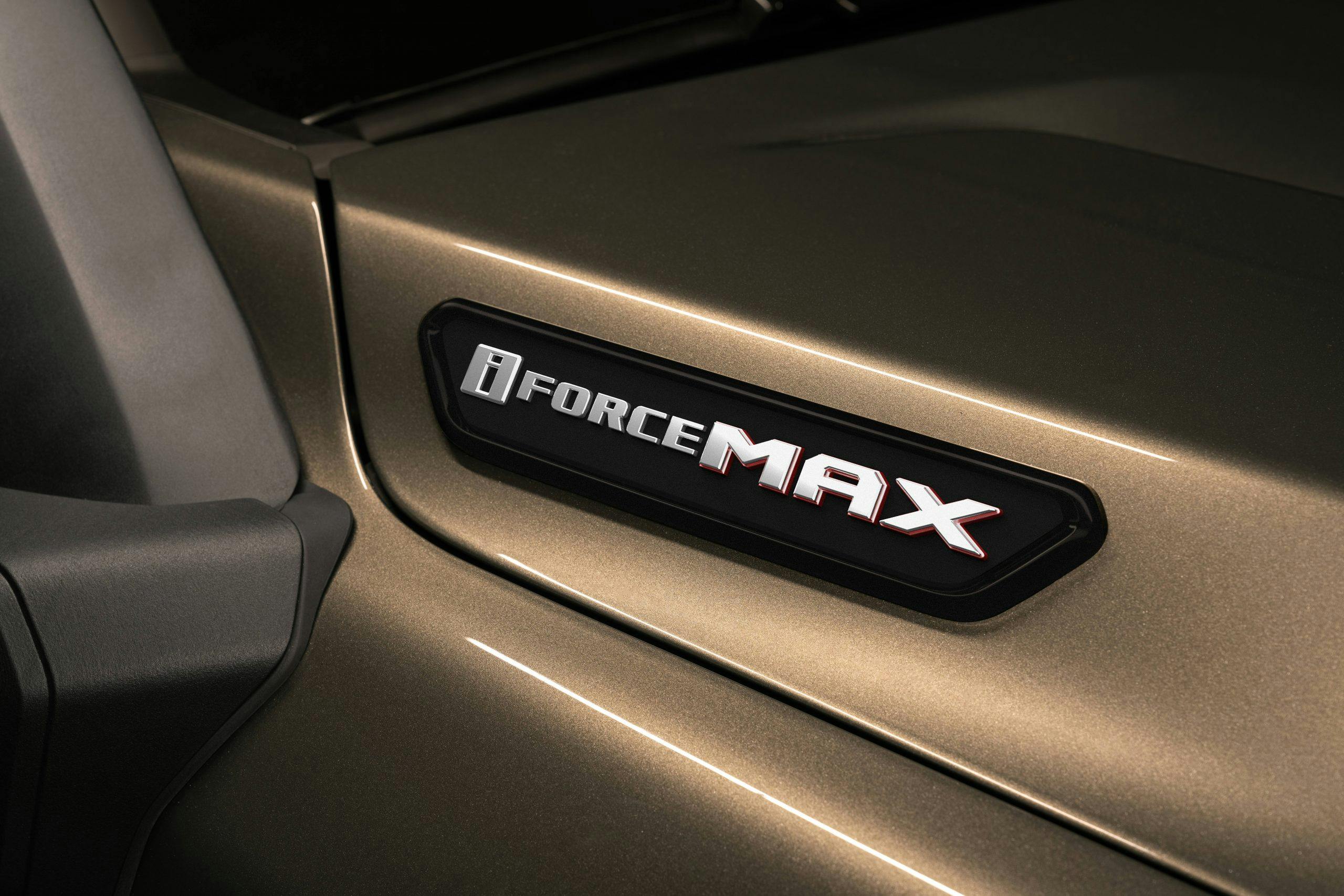

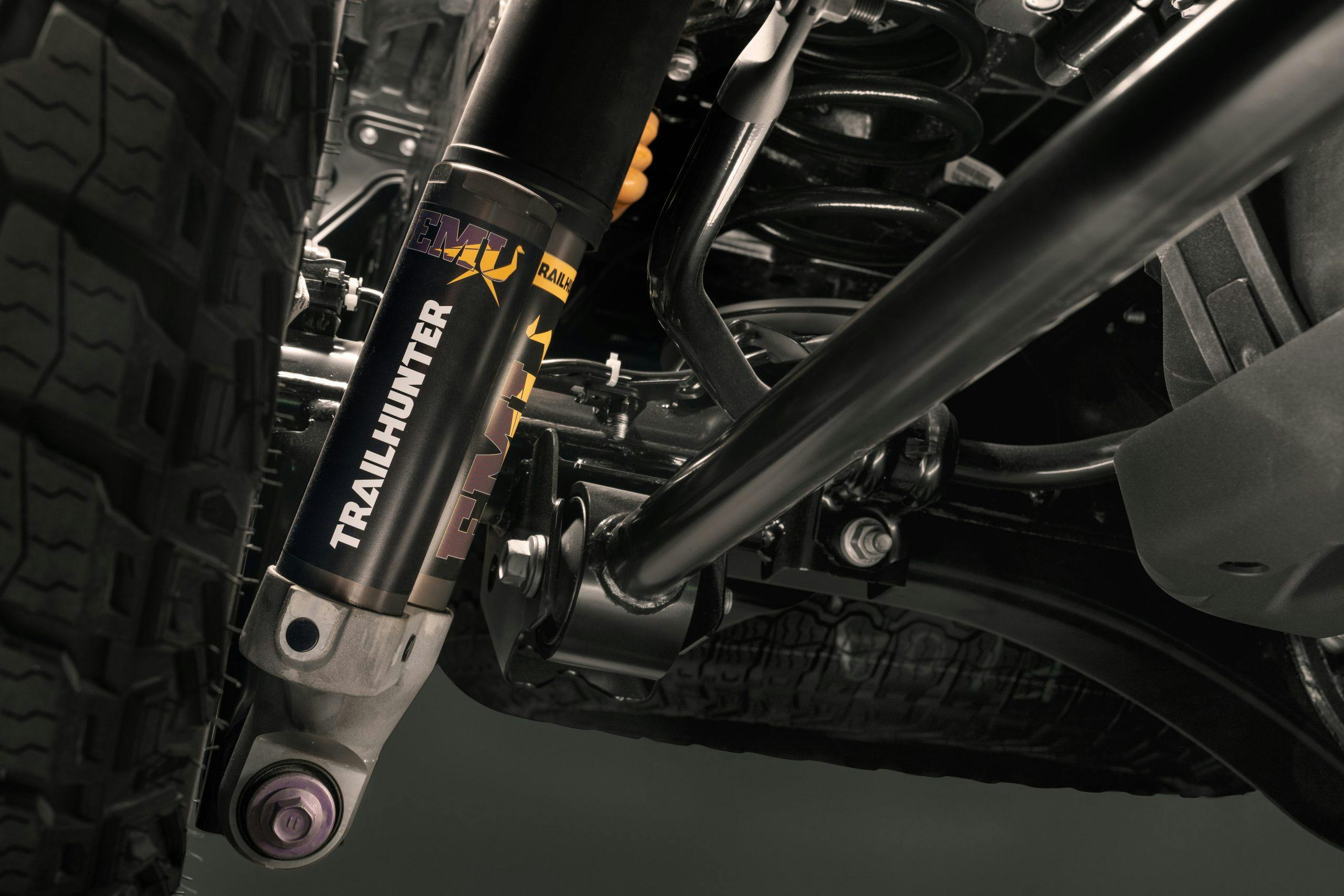
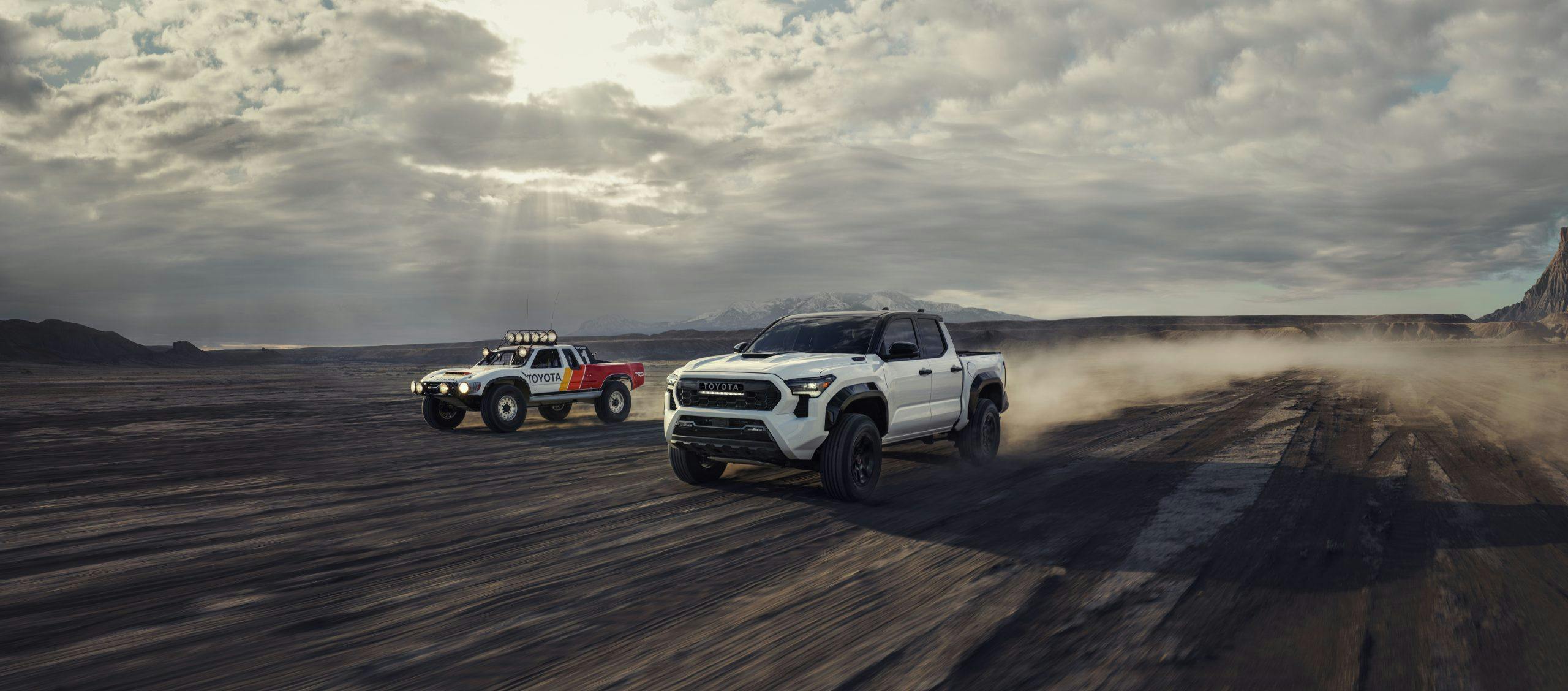
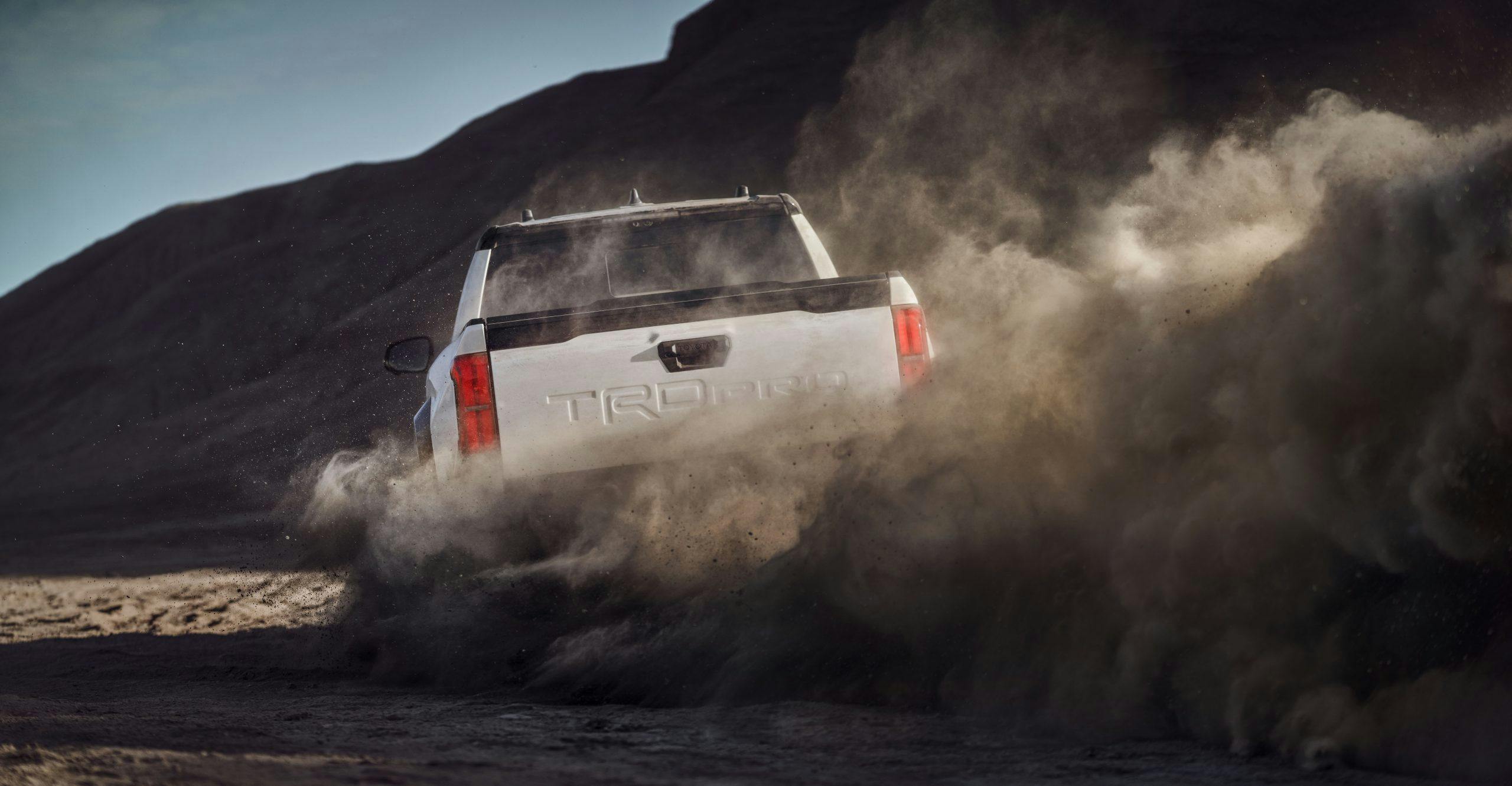
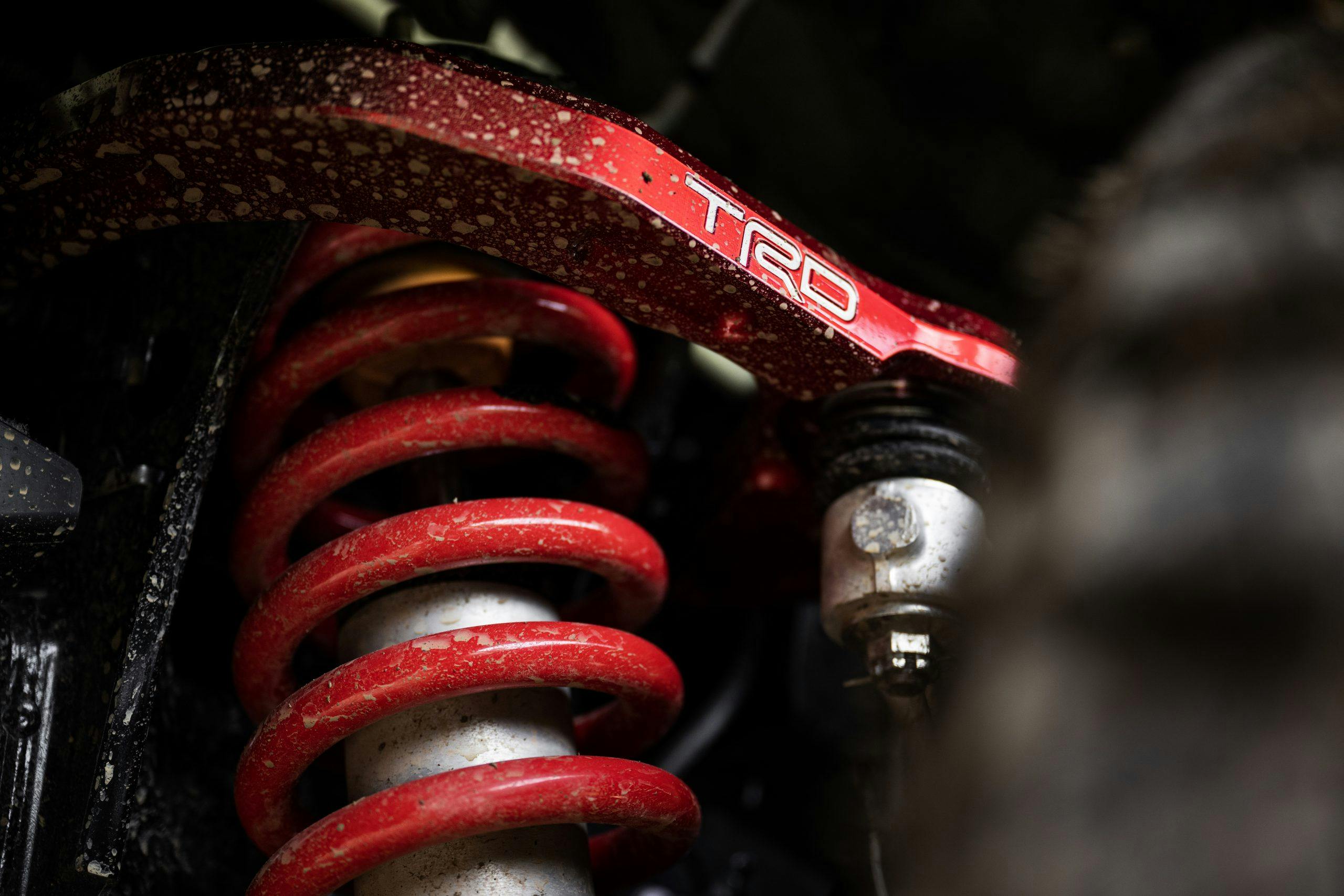
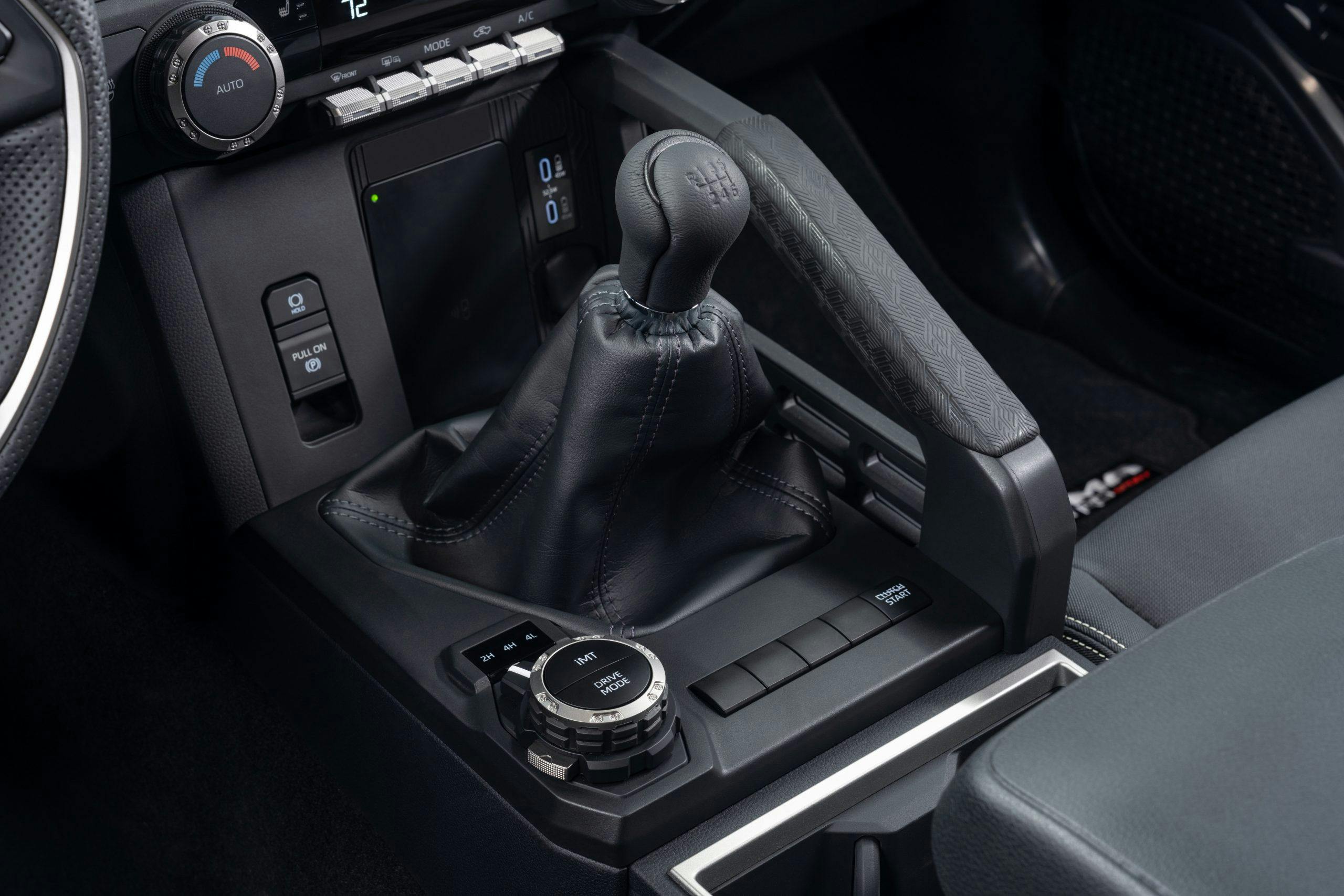

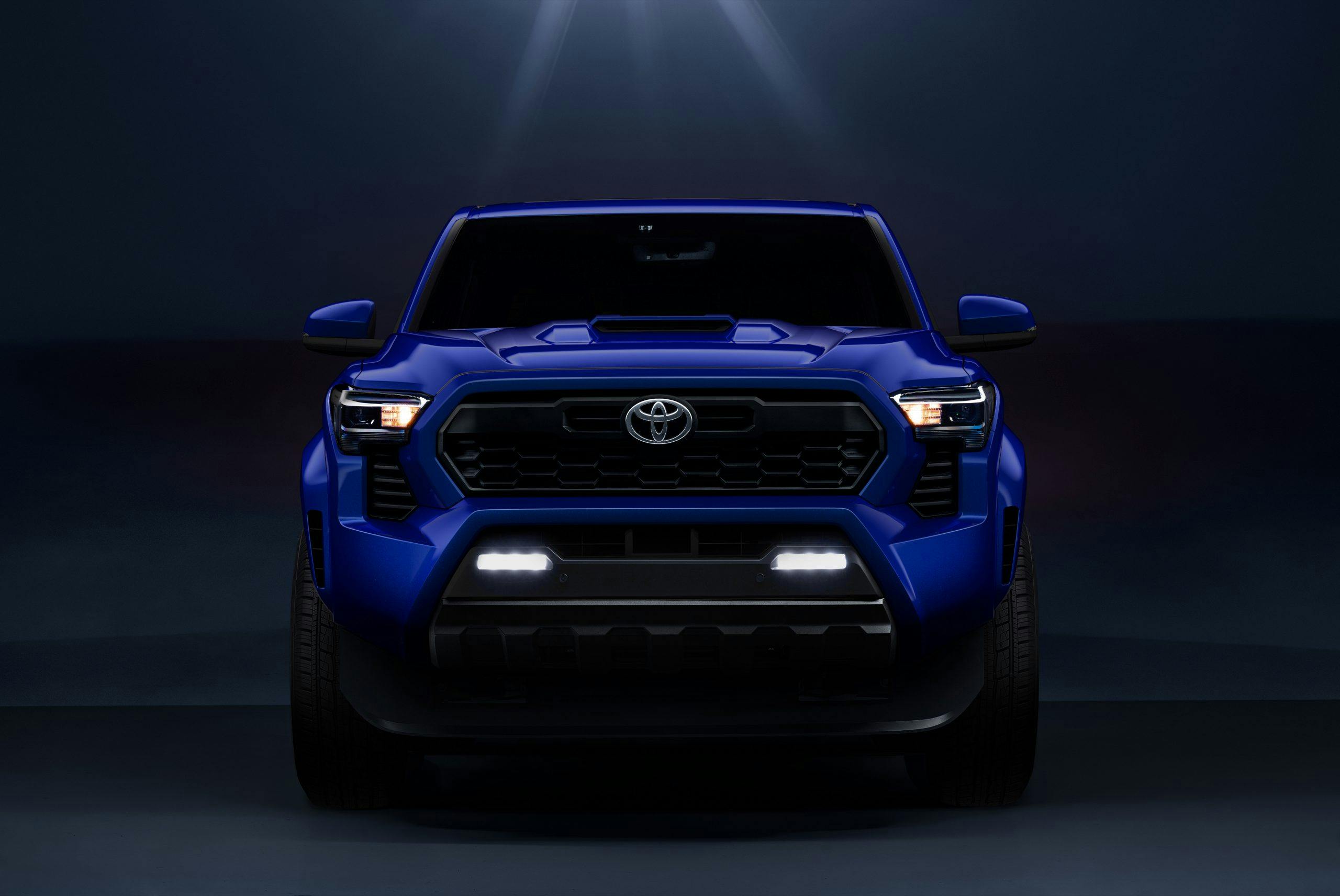



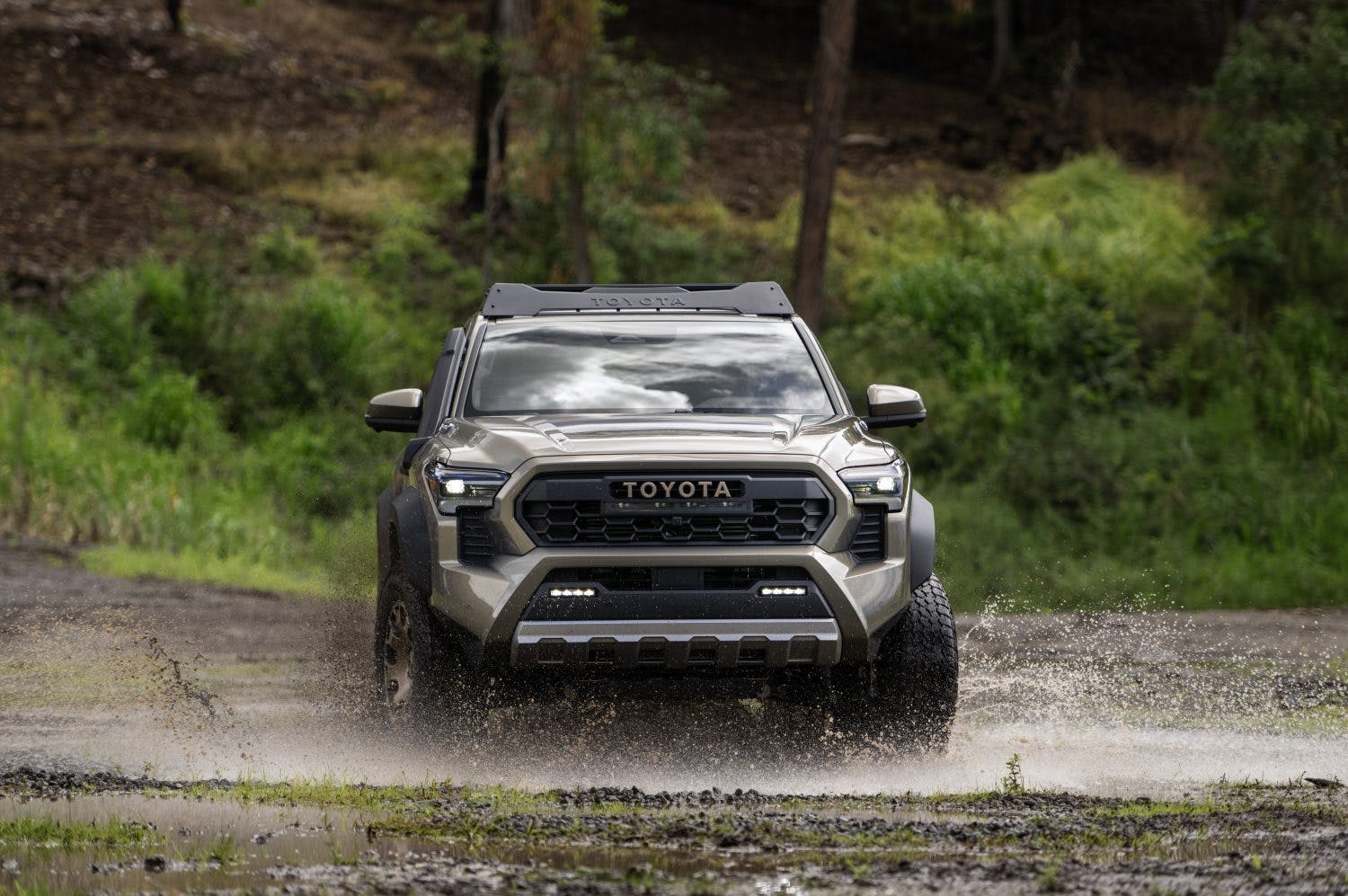
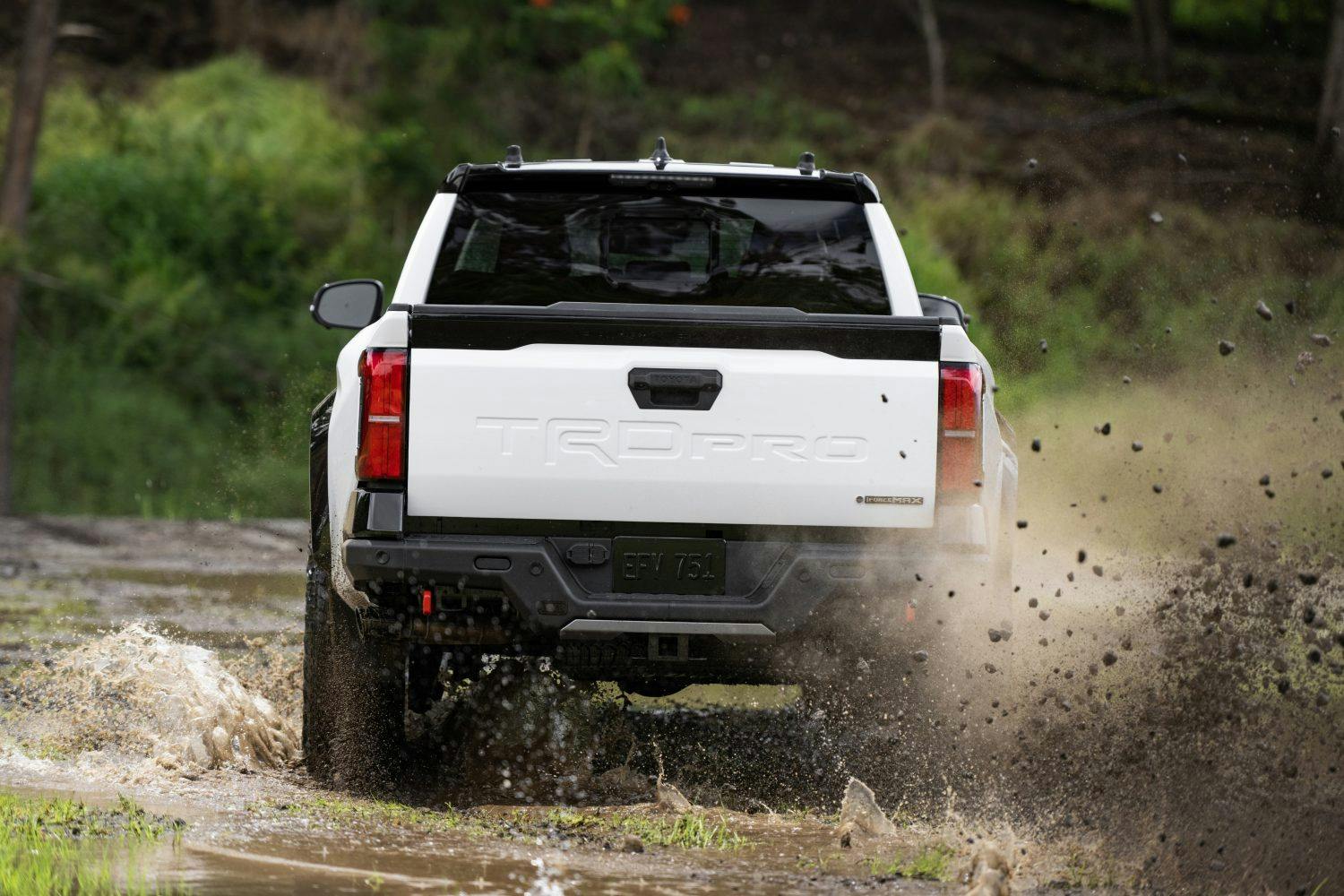



I will pass on the gimmicks here.
“The new Tacoma’s biggest competitor, however, might itself. The outgoing Tacoma just flat-out worked, always and forever.”
I own a 2010 Tacoma. I was recently informed that they can’t put it on a lift anymore because the frame rusted out. As far as I’m concerned, the new Tacoma’s biggest competitor is a used Nissan Hardbody.
Thats odd George about your frame. My 2010 was recalled and frame sprayed. Now warrantied for as long as I own it. The frames are made by Dana in the US. I would check into it. Cheers.
It’s interesting. I’s still like a V6 option. It’s doable, Nissan is doing it. Finally disc brakes in the rear like the Frontier over a decade later.
For all the talk of front lockers on the competition, even with independent front suspension, I would argue that (unless you are doing pretty serious rock crawling) putting a 2.5:1 bias ratio Torsen diff in the front and tuning the traction control to brake a single front tire if it is lifted, would provide 90%+ of the capability of said front locker and be cheaper and easier to incorporate on the IFS truck. And before anyone laments Torsen not being capable enough, I will offer a reminder that the F150 Raptor is using a 2.5:1 bias Torsen front diff from the factory, so there is that. Torsen allows for the limited slip and yet still having good cornering capabilities while under load, something 4wd does not.
Torsen diffs are a much better choice for IFS. Even without a braking bias, they work very well. I’m a SFA fan, but have a decent amount of experience with a front IFS torsen and a rear e-locker, it should be standard equipment on most of these off-road packages
I will be shopping for a mid size truck next year and will consider this one. My only complaint about the current Tacoma is the seats. They are terrible. My worn out 2009 base model Chevy Cobalt had far superior seats. Hopefully Toyota will correct that problem for 2024.